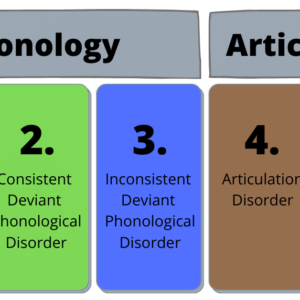Using Language Proficiency Information in Speech-Language Evaluations
$22.00

Course Type: Video – 1 1/2 hours
ASHA Course Code: Diversity, Equity, and Inclusion in Education, Training, Service Delivery, Public Policy – 7030
We often get various bits of information about language proficiency in our evaluation referral packets but we aren’t always sure how to use it. In this presentation we look at the current research on language proficiency and discuss how it informs our speech language evaluations.
Knowing the age of first exposure to English and current exposure to English and other languages helps evaluators understand what to expect and how to go about testing. Current research tells us that there is a point at which formal testing in a language doesn’t help inform our diagnostic decisions. We will look at different ways language proficiency impacts test performance so we can make more informed diagnostic decisions for bilingual children. We’ll cover these details and many more about the impact of language proficiency on the assessment process.
Additional Information
| Population | Early Childhood, School Age |
|---|---|
| Duration | 1.5 hours |
| Credit | .15 Continuing Education Units |
| Topics | Evaluations |
| Format | Video |
Financial Disclosure: Ellen Kester, Ph.D., CCC-SLP. Dr. Ellen Kester is the owner of Bilinguistics and receives a salary. Bilinguistics receives royalty payments for online courses.
Non-Financial Disclosure: Ellen Kester does not have any non-financial relationships to disclose.
Knowing the age of first exposure to English and current exposure to English and other languages helps evaluators understand what to expect and how to go about testing. Current research tells us that there is a point at which formal testing in a language doesn’t help inform our diagnostic decisions.
We will look at different ways language proficiency impacts test performance so we can make more informed diagnostic decisions for bilingual children. We’ll cover these details and many more about the impact of language proficiency on the assessment process.
Participants will:
List four things that impact language proficiency
Describe the difference between the age of first exposure and current exposure in terms of impact on the assessment process
Describe how we can use information about language structure to help us understand whether a child’s language patterns are indicative of Developmental Language Disorder or not.
Time-Ordered Agenda:
05 minutes Intro – Why we need to know about language proficiency
15 minutes Language Exposure – Years and Current Exposure
10 minutes How language context impacts the speech-language assessment
10 minutes Language Domains and how they vary across bilingual children
10 minutes How language structure helps us analyze test item errors
30 minutes Q&A with Case Studies
Need CEUs?

 Share
Share
 Tweet
Tweet
 LinkedIn
LinkedIn
 Pin
Pin
 Email
Email





